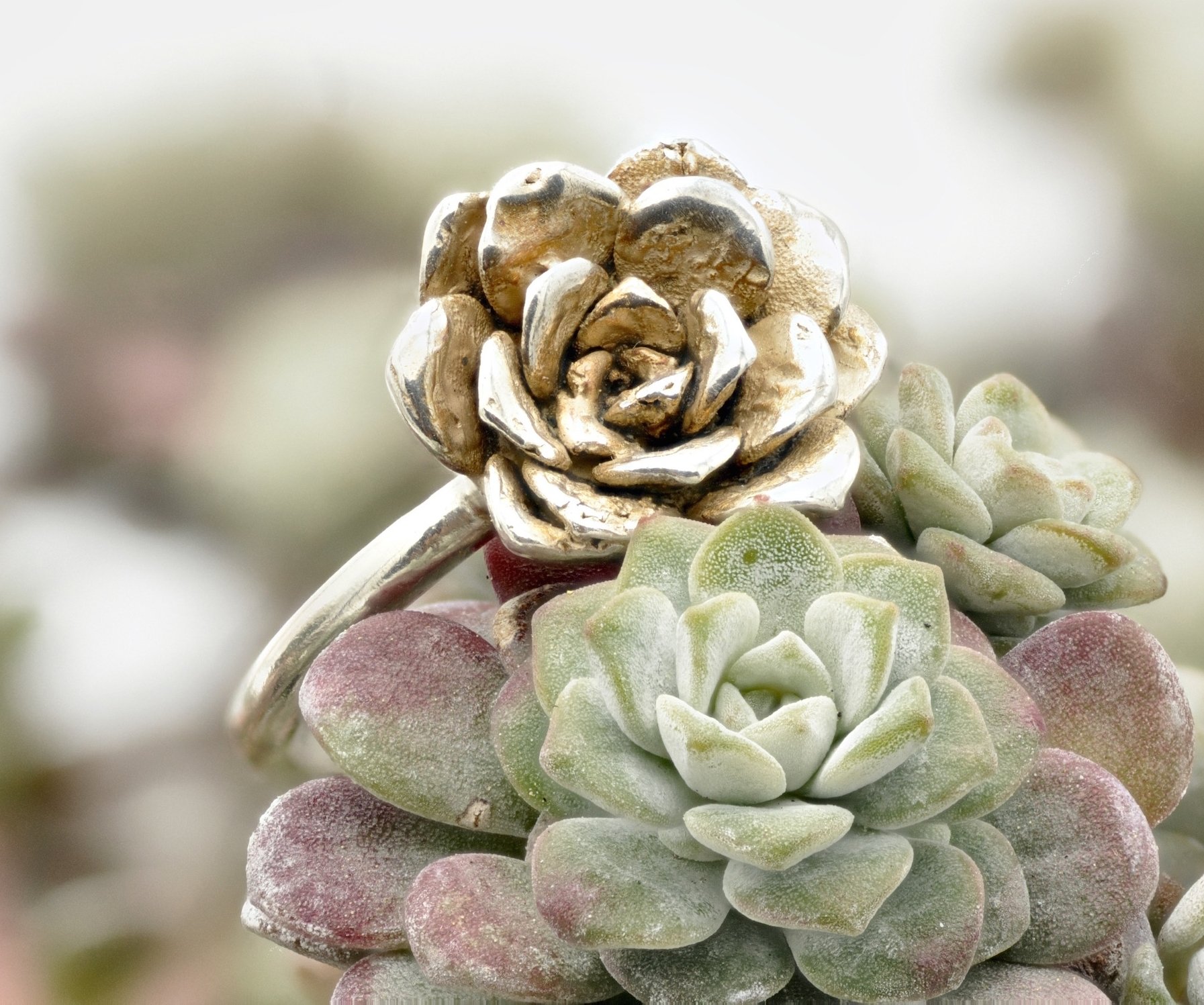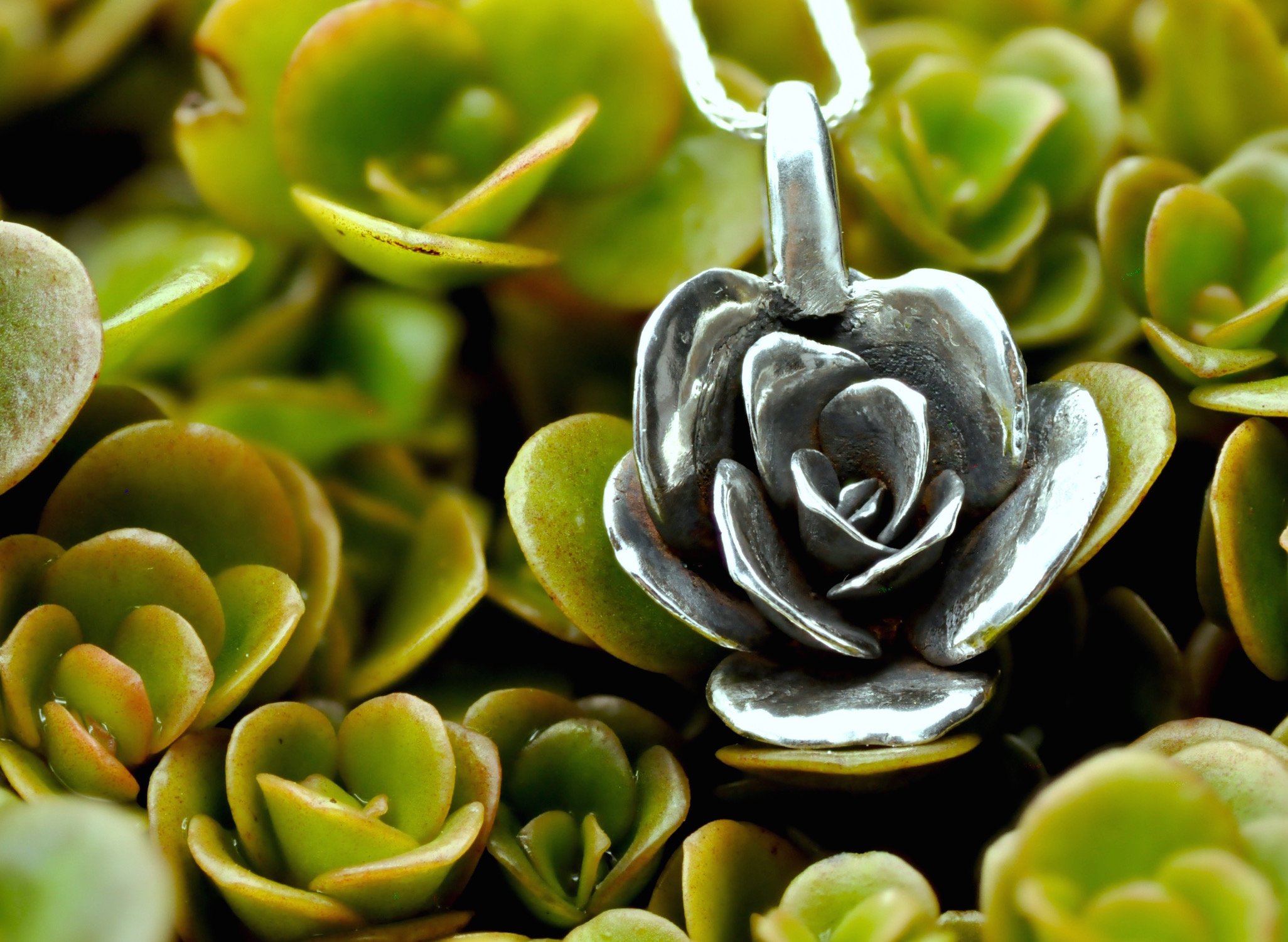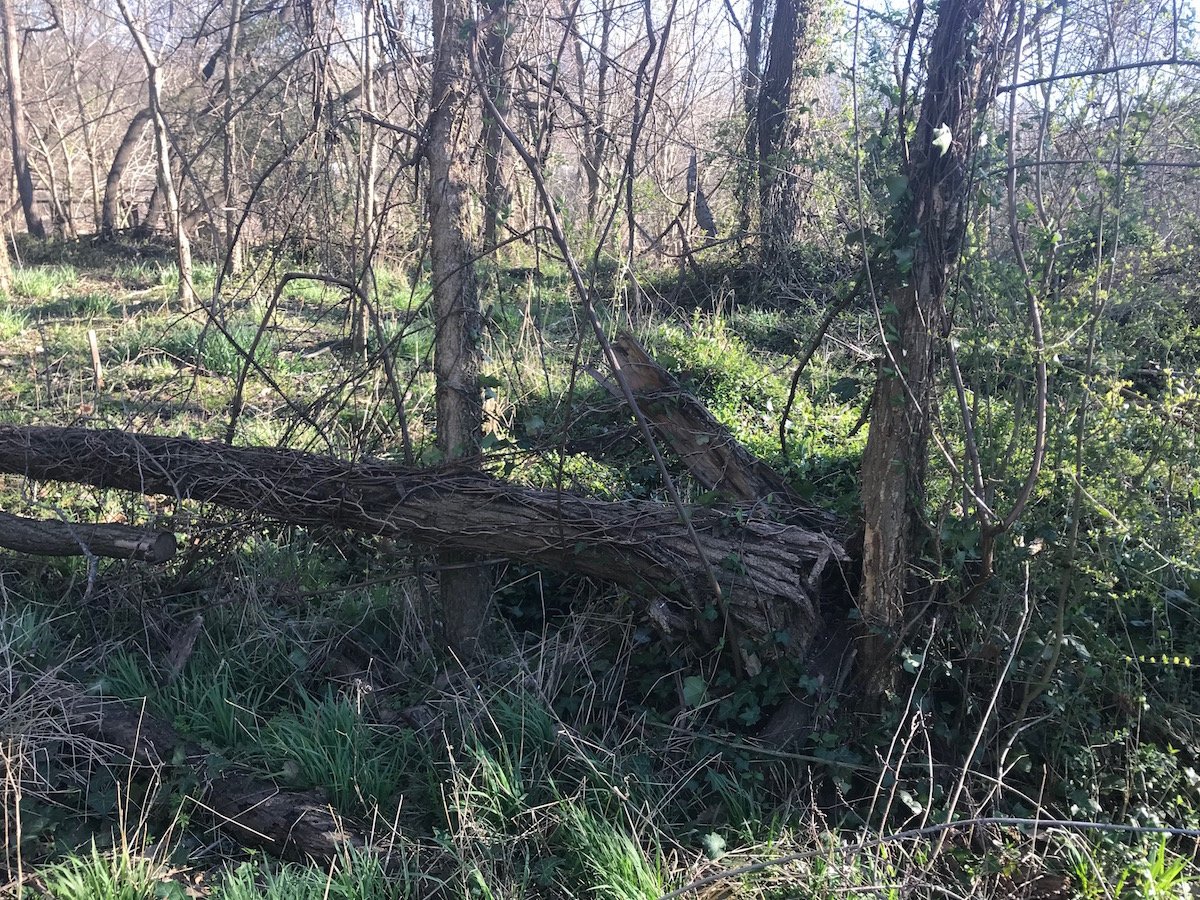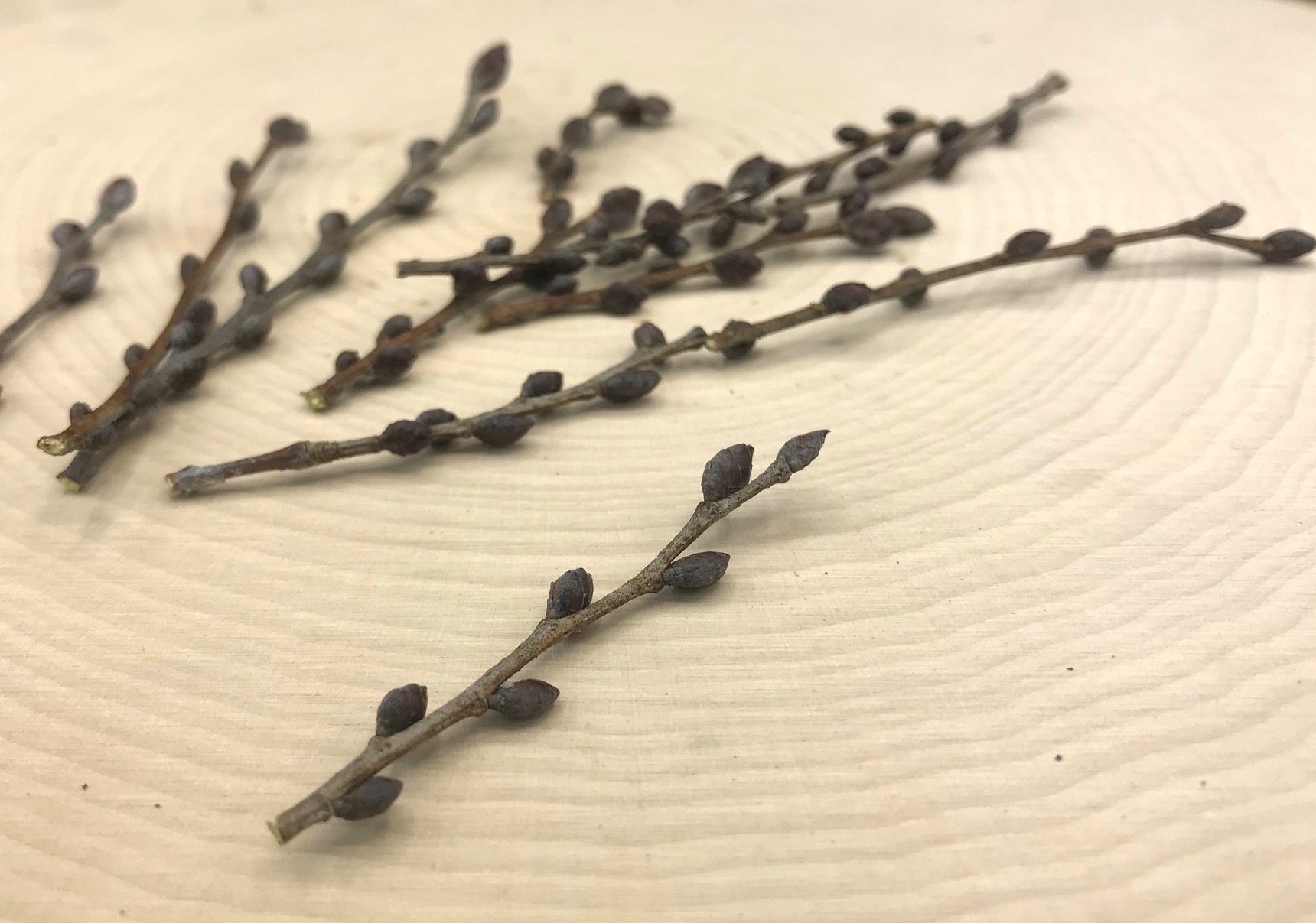Making Plant Jewelry from Succulents, Branches, & Other Botanical Bits
There is no better artist than nature. In making molds of her plants and casting them into metal, we are bringing you exact replicas of what was once a living plant.
We harvest from our gardens, and forage in parks and along rivers to gather the best little bits of nature and cast them into silver and gold art.
Through continuous trial and error, we have developed ways to craft jewelry from succulents, flowers, branches, and other organic material.
This article on Lost Wax Casting explains the basic process of casting metal. It's a 5000 year old technique from ancient Judea. Today many engagement rings are made by lost wax casting, only with a bunch of new technical innovations.
A quick explanation of the casting process is:
Find an organic model you want to copy
Attach channels to your model so that the metal can flow into it.
Enclose it in a steel flask and cover it with plaster. Let plaster dry.
Burn away the organic model
Pour silver into the "hole" left in the plaster
Each step of this process involves its own set of tricks. Casting living tissue is different than the usual jewelry work that is done with wax and resin. The soft tissue of plants responds differently to the hot wax, the plaster, and the burnout-cycle.
Why Cast Plants?
The positive model before it is encased in plaster- tips of the golden moss succulent put on pink wax channels to direct the flow of silver into the center of the florets.
Casting directly from the mold of a plant allows us to capture some very intimate detail and texture. It also makes many of our pieces unique, a one-of-a-kind botanical structure.
Developing this technique has led us down a lot of new paths: we now grow and harvest several varieties of succulents, we have regular foraging dates into forests and parks, and we have experimented with the technical aspects of castings in ways we wouldn't have to do if we were casting only wax and resin.
Succulents
We can cast all kinds of plant material, but we have a few favorites that we work with all the time. Succulents give us some very special shapes. They are thick and juicy and the metal flows into them beautifully.
My mother is in charge of our succulent supply. Her spare bedroom is now dedicated to keeping dozens of plants hot and happy. She will give me a plant when our stock is running low, I clip several little tips to cast, and then return it to her so it can recuperate over the next few months.
These succulents grow under lights that are on a timer to ensure that they have ample lighting. The lights go on at 5am, and the light coming from the spare bedroom serves as a hallway nightlight to my waking father.
It's like succulent farming where the harvest is FOR MAKING jewelry instead of food.
Succulents also have very interesting plant biology that I hope to learn more about. Did you know that pineapples are succulents? And so are air plants? These are the species we work with:
Capo Blanco, Sedum spathifolium
Limelight, Sedum makinoi
Red Pagoda, Crassula corymbulosa
Golden Moss, Sedum hispanicum
Zipper plant, Crassula muscosa
String of Hearts, Ceropegia woodii
Mother of Thousands, Bryophyllum daigremontianum
Foraging
Foraging also gives us a lot of material. We keep a look out for little bits of trees and plants when we are hiking or camping, or even just hanging out in a park. This past spring we did a lot of foraging after wind storms because they would knock a variety of things off the trees and plants. Foraging is beneficial because we only gather the bits of plants that have already fallen from the trees.
One great score this spring was on Belle Isle in March when we found a large fallen elm branch that was just beginning to bud for spring. We gathered nearly a hundred little twigs, brought them home, and dipped them in hot wax. The wax helps to seal the wood and thicken up the crotches where the buds were sprouting off the main branch. Wood has a lot of water and air in it, and the wax coats the twigs so that they are smoother and stronger in the final cast.
Trouble-shooting: Flow
This positive model with be encased in plaster and then the wax and branches will burn away in a kiln that goes up to 1500 degrees fahrenheit. When the model is completely burned away it will be put on the vacuum table in the opposite orientation- with the branches pointing down - and the molten metal will be poured into the holes left by the branches. Flow is an easy dynamic to account for when the model is straight and thick.
Any material that you want to cast has to promote the flow of liquid metal. This means that your model must be thick enough, and must have channels that direct the flow of silver down to all the nooks and crannies of your mold. Silver melts at 1763 degrees farenheit, and we are pouring it into a plaster mold that is heated to about 1000 degrees. So as soon as the metal hits the flask it starts to cool, and if your model inhibits the downward flow of the metal then you end up with an incomplete cast.
With practice and experience we have an idea of what we can cast and what we can’t. Sometimes I will “paint” the back of a leaf to thicken it up, or, as previously mentioned, we will dip branches and vines into hot wax to coat them. This helps to make our models thick enough to cast, but the other battle is making sure that the metal flows down the mold. This is accomplished by placing channels (called sprues) at strategic points along the model. Sprues are the straight pink wax channels in the photos below
Virginia Creeper vines dipped in pink wax. These haven't been attached to sprue yet, which can look visually confusing because it's the same color pink wax as the straight sprue channels.
Freshly cut silver creepers, they need grinding, soldering, and polishing. Firescale is the black film of oxidation that is left on the surface of silver right after it has been cast. Removing it is part of the finishing process.
The twisty nature of vines is what makes them so fun, but it also makes them one of the most difficult pieces to cast. Metal can only flow down, and we use a vacuum casting machine to help pull the metal down. So any twist that goes up, even if it only goes up a few degrees, could stop the flow of metal and leave us with an incomplete cast.
When we cast vines we have to attach several sprues along the vine to ensure that metal can flow through the full twist. It isn’t so hard to attach the wax sprue to the vines, but once the piece is cast we have to saw each of those channels off the piece and then grind it down to follow the smooth twist of the original vine.
These twisty vines are attached to an additional sprue whenever the twists turns in a way that would inhibit the downward flow of silver, like on the front left vine. This extra channel allows fresh molten silver to enter that specific part of the twist and join the rest of the silver while they are all still hot enough to solidify together.
One of my favorite pairs of creeper earrings and the only ones that we have cast in 14k gold.
Trouble-shooting: Strength
Sometimes the three-dimensionality of pieces makes them difficult to cast. Think of a flower perched on a long stem. If the flower and the stem were made of metal than the flower would be much heavier and could "sag" on such a thin, weak stem.
These dawn redwood pine cones have wings that are attached to a central stem. The cone starts out closed and as it matures the cracks start to open The wings are thicker towards the outer regions, and thin where they attach to the central spine. For the pine cone that is light and airy this thinness is beneficial- the wings must open, like a bloom, for the seeds to escape.
In metal however, this unbalanced weight would make the wings of the pine cone weak and easy to break off. So I take a wax pen (a tool whose tip heats to 100 degrees celsius) and make little deposits of wax between each wing to ensure that the cast piece is sturdy enough to be worn and handled without breaking.
Trouble-shooting: Burn-out
The final step before pouring the silver is called the burn-out, this is where we cook the flasks. It is the most mysterious and hard to control step because we don't know what's happening inside the kiln. Is there enough air flow? Is it hot enough? Is it too hot?
There are a bunch of variables and recommendations from various experts, but we find that the only tried and true method is trial and error. If we get incomplete casts, we change a variable until we find the right recipe. If we get a full cast, we try to repeat all the steps exactly as before.



















